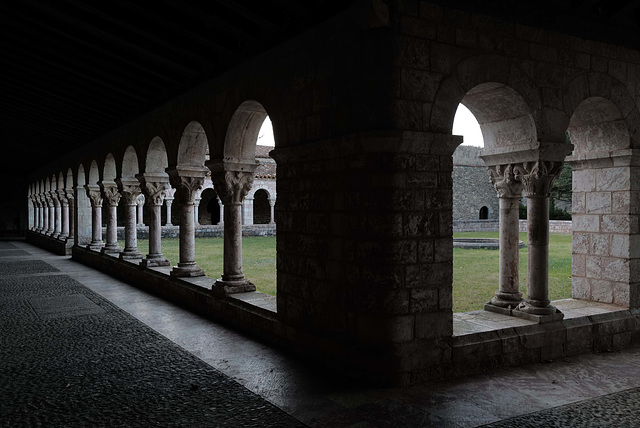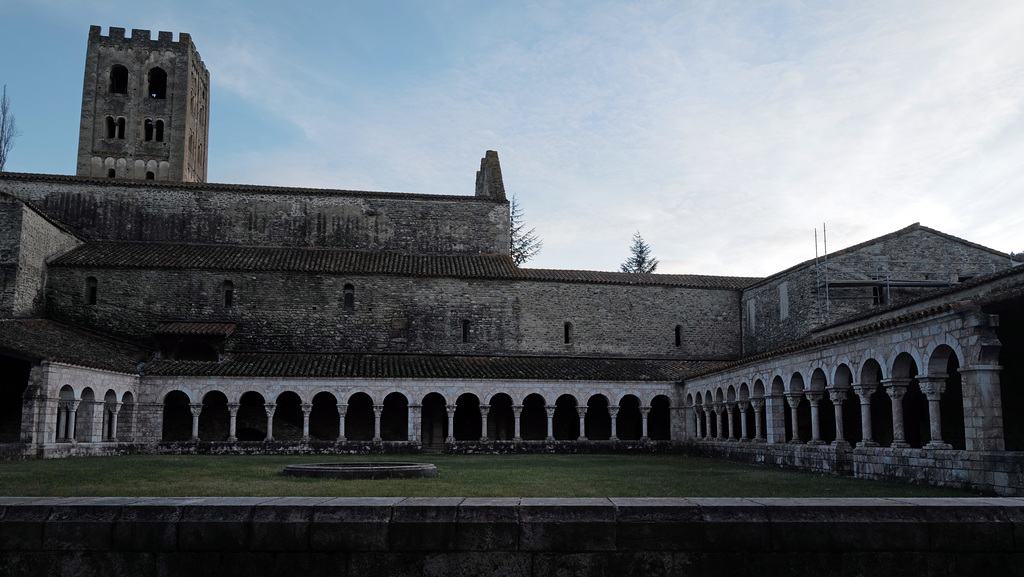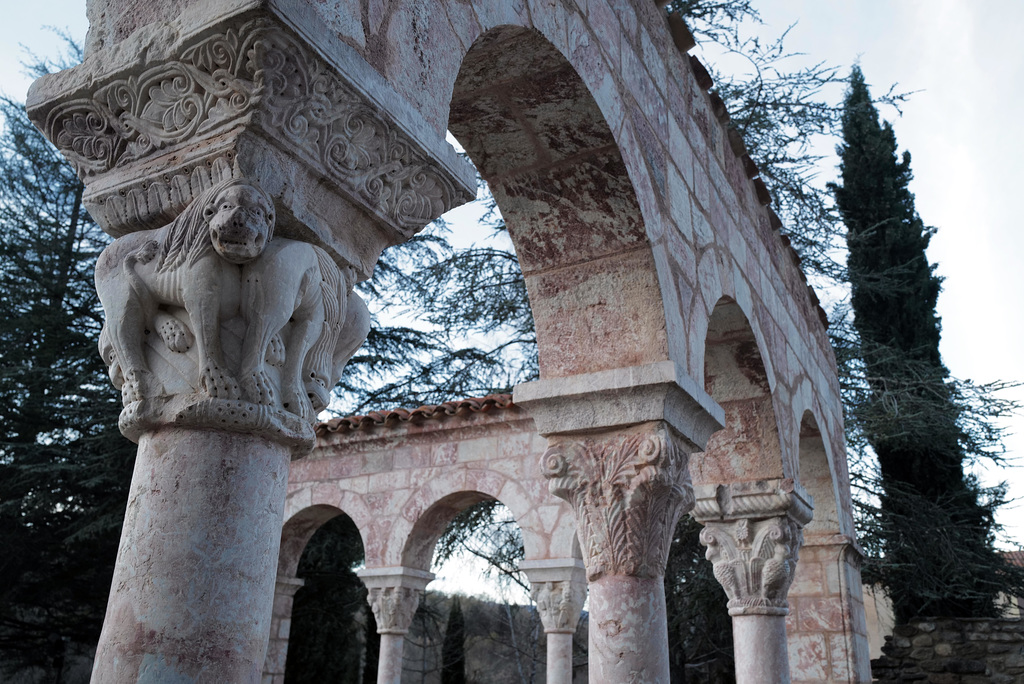Monestir de Sant Andreu de Sureda
Argelers de la Marenda, Cementiri, HFF
Dante torch enlightened
Argelers de la Marenda, HFF
Monestir de Sant Andreu de Sureda
Monestir de Sant Andreu de Sureda
Consolida regalis, Ranunculaceae
Consolida regalis, Ranunculaceae
Lythrum salicaria, Salgueirinho L1020202
Nostra Senyora del Corral
Argelès-sur-Mer, La Massane, Luzes de fevereiro
Prats de Molló i la Presta, Església parroquial de…
Priorato de Serrabona, Pirinéus
Priorato de Serrabona, Pirinéus
Priorato de Serrabona, Pirinéus
Priorato de Serrabona, Pirinéus
Sant Jeroni d'Argelers de la Marenda
Sant Jeroni d'Argelers de la Marenda
Sant Marti de Cortsavi
Santa Maria de Marcèvol
Original Buddha for Sunday Challenge
Santa Maria de Marcèvol
Santa Maria del Vilar, HFF
Monasterio de Sant Miquel de Cuixà
Monasterio de Sant Miquel de Cuixà
Penedos, Evening lights
Helichrysum italicum subsp. picardi, Asterales
Tolpis barbata, Survivor
Ficus opuntia
Notocactus leninghausii
Jasione montana, Asterales
Notocactus leninghausii
Adenium obesum
Echium plantagineum, Boraginaceae, Thirsty Land Po…
Opitsaht Reserve, Canada, HFF
Opitsaht Reserve, Canada, HFF
Anchusa undulata, Boraginaceae
Cichorium intybus, Asteraceae
Anarrhinum bellidifolium, Lamiales
Daucus carota, Apiales
Pycnocomon rutifolium, Dipsacales
Heliotropium europaeum, Boraginales
Paronychia argentea Lam. var. angustifolia var. ar…
Ruta montana, Rutaceae, Rudão, Erva-de-graça
Unleash me
1/60 • f/7.1 • 28.0 mm • ISO 800 •
LEICA CAMERA AG LEICA Q2
SUMMILUX 1:1.7/28 ASPH.
See also...
Keywords
Authorizations, license
-
Visible by: Everyone -
All rights reserved
-
298 visits
Monasterio de Sant Miquel de Cuixà


PIPs ABOVE


Al pie del Canigó encontramos el monasterio de Sant Miquel de Cuixà que, junto con Ripoll, fue un poderoso centro religioso, político y cultural durante la Edad Media.
El nacimiento del monasterio data del año 879, y es fruto de una desgracia: después que una riada destruyera la abadía de Sant Andreu d’Eixalada, los monjes supervivientes se instalaron en un pequeño cenobio dedicado a San Germán y dirigido por el padre Protasio. A raíz de estos hechos y gracias a la protección de los condes de Cerdanya y Conflent, esta pequeña celda se convertiría en el monasterio de Sant Miquel y Sant Germà de Cuixà, uno de los más poderosos de la época.
El siglo X fue el de la consolidación del monasterio: sus tierras, dominios e iglesias que de ellos dependían crecieron de forma espectacular. En el 956, Garí reconstruyó la iglesia de Sant Miquel, levantada pocos años antes por el conde Sunifred.
La llegada del abad Oliba, introductor del románico lombardo en Cataluña, supuso una revolución arquitectónica del monasterio. Oliba añadió dos pasillos, tres absidiolas y levantó un cimborio que se sostiene con columnas de mármol rosa y capiteles de mármol blanco. También edificó la cripta de la Natividad o del Pesebre de planta circular, la capilla de la Trinidad y dos campanarios lombardos a ambos lados del crucero (actualmente solo queda uno).
El claustro se empezó a construir durante el siglo XII por orden del abad Gregorio. Hecho con mármol rosado y una espectacular decoración escultórica, era uno de los más grandes de los condados catalanes. Actualmente, para seguir la pista a algunos de sus capiteles tenemos que viajar hasta Nueva York, en el museo The Cloisters.
Sant Miquel de Cuixà tiene el honor de ser considerado el lugar de nacimiento de la lengua catalana. Posiblemente, del escritorio de Cuixà salió la célebre Canción de Santa Fe, un poema hagiográfico que se considera uno de los ejemplos literarios más antiguos en una lengua romance, aunque se discute si se trata de lengua occitana o catalana.
Link: patrimoni.gencat.cat/es/coleccion/monasterio-de-sant-miquel-de-cuixa
++++
At the foot of the Canigó we find the monastery of Sant Miquel de Cuixà which, together with Ripoll, was a powerful religious, political and cultural centre during the Middle Ages.
The birth of the monastery dates back to 879, and is the result of a misfortune: after a flood destroyed the abbey of Sant Andreu d'Eixalada, the surviving monks settled in a small monastery dedicated to Saint Germain and directed by Father Protasio. As a result of these events and thanks to the protection of the Counts of Cerdanya and Conflent, this small cell would become the monastery of Sant Miquel and Sant Germà de Cuixà, one of the most powerful monasteries of the time.
The 10th century saw the consolidation of the monastery: its lands, domains and churches that depended on them grew spectacularly. In 956, Garí rebuilt the church of Sant Miquel, built a few years earlier by Count Sunifred.
The arrival of Abbot Oliba, who introduced the Lombard Romanesque style to Catalonia, brought about an architectural revolution in the monastery. Oliba added two corridors, three apses and built a dome supported by pink marble columns and white marble capitals. He also built the crypt of the Nativity or the Manger with a circular floor plan, the Trinity chapel and two Lombard bell towers on both sides of the transept (only one remains today).
Construction of the cloister began during the 12th century by order of Abbot Gregory. Made of pink marble and spectacular sculptural decoration, it was one of the largest in the Catalan counties. Nowadays, in order to follow some of its capitals we have to travel to New York, in The Cloisters museum.
Sant Miquel de Cuixà has the honour of being considered the birthplace of the Catalan language. It is possible that from Cuixà's desk came the famous Song of Santa Fe, a hagiographic poem that is considered to be one of the oldest literary examples in a Romance language, although it is disputed whether it is the Occitan or Catalan language.
Translated with www.deepl.com/Translator (free version)
Translate into English


Al pie del Canigó encontramos el monasterio de Sant Miquel de Cuixà que, junto con Ripoll, fue un poderoso centro religioso, político y cultural durante la Edad Media.
El nacimiento del monasterio data del año 879, y es fruto de una desgracia: después que una riada destruyera la abadía de Sant Andreu d’Eixalada, los monjes supervivientes se instalaron en un pequeño cenobio dedicado a San Germán y dirigido por el padre Protasio. A raíz de estos hechos y gracias a la protección de los condes de Cerdanya y Conflent, esta pequeña celda se convertiría en el monasterio de Sant Miquel y Sant Germà de Cuixà, uno de los más poderosos de la época.
El siglo X fue el de la consolidación del monasterio: sus tierras, dominios e iglesias que de ellos dependían crecieron de forma espectacular. En el 956, Garí reconstruyó la iglesia de Sant Miquel, levantada pocos años antes por el conde Sunifred.
La llegada del abad Oliba, introductor del románico lombardo en Cataluña, supuso una revolución arquitectónica del monasterio. Oliba añadió dos pasillos, tres absidiolas y levantó un cimborio que se sostiene con columnas de mármol rosa y capiteles de mármol blanco. También edificó la cripta de la Natividad o del Pesebre de planta circular, la capilla de la Trinidad y dos campanarios lombardos a ambos lados del crucero (actualmente solo queda uno).
El claustro se empezó a construir durante el siglo XII por orden del abad Gregorio. Hecho con mármol rosado y una espectacular decoración escultórica, era uno de los más grandes de los condados catalanes. Actualmente, para seguir la pista a algunos de sus capiteles tenemos que viajar hasta Nueva York, en el museo The Cloisters.
Sant Miquel de Cuixà tiene el honor de ser considerado el lugar de nacimiento de la lengua catalana. Posiblemente, del escritorio de Cuixà salió la célebre Canción de Santa Fe, un poema hagiográfico que se considera uno de los ejemplos literarios más antiguos en una lengua romance, aunque se discute si se trata de lengua occitana o catalana.
Link: patrimoni.gencat.cat/es/coleccion/monasterio-de-sant-miquel-de-cuixa
++++
At the foot of the Canigó we find the monastery of Sant Miquel de Cuixà which, together with Ripoll, was a powerful religious, political and cultural centre during the Middle Ages.
The birth of the monastery dates back to 879, and is the result of a misfortune: after a flood destroyed the abbey of Sant Andreu d'Eixalada, the surviving monks settled in a small monastery dedicated to Saint Germain and directed by Father Protasio. As a result of these events and thanks to the protection of the Counts of Cerdanya and Conflent, this small cell would become the monastery of Sant Miquel and Sant Germà de Cuixà, one of the most powerful monasteries of the time.
The 10th century saw the consolidation of the monastery: its lands, domains and churches that depended on them grew spectacularly. In 956, Garí rebuilt the church of Sant Miquel, built a few years earlier by Count Sunifred.
The arrival of Abbot Oliba, who introduced the Lombard Romanesque style to Catalonia, brought about an architectural revolution in the monastery. Oliba added two corridors, three apses and built a dome supported by pink marble columns and white marble capitals. He also built the crypt of the Nativity or the Manger with a circular floor plan, the Trinity chapel and two Lombard bell towers on both sides of the transept (only one remains today).
Construction of the cloister began during the 12th century by order of Abbot Gregory. Made of pink marble and spectacular sculptural decoration, it was one of the largest in the Catalan counties. Nowadays, in order to follow some of its capitals we have to travel to New York, in The Cloisters museum.
Sant Miquel de Cuixà has the honour of being considered the birthplace of the Catalan language. It is possible that from Cuixà's desk came the famous Song of Santa Fe, a hagiographic poem that is considered to be one of the oldest literary examples in a Romance language, although it is disputed whether it is the Occitan or Catalan language.
Translated with www.deepl.com/Translator (free version)
Sylvain Wiart, Chris10, volker_hmbg, kiiti and 25 other people have particularly liked this photo
- Keyboard shortcuts:
Jump to top
RSS feed- Latest comments - Subscribe to the comment feeds of this photo
- ipernity © 2007-2024
- Help & Contact
|
Club news
|
About ipernity
|
History |
ipernity Club & Prices |
Guide of good conduct
Donate | Group guidelines | Privacy policy | Terms of use | Statutes | In memoria -
Facebook
Twitter

Admired in:
www.ipernity.com/group/tolerance
avec cette combinaison d'ombre et de lumière..!
Bonne journée.
Sign-in to write a comment.